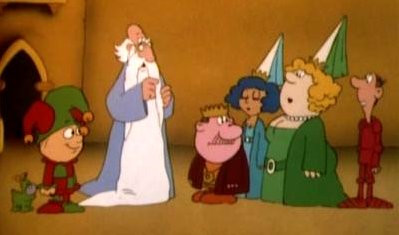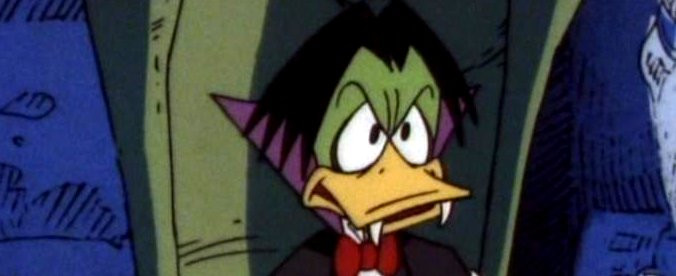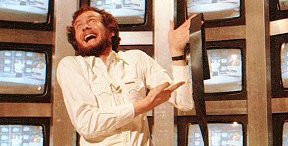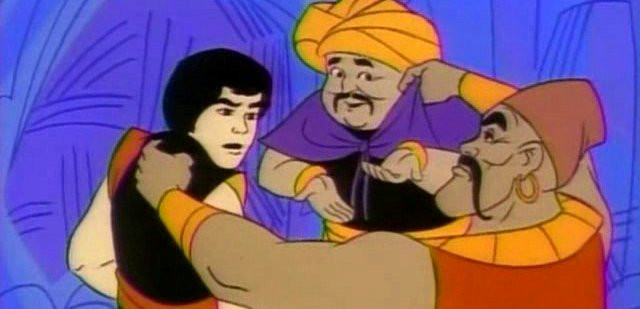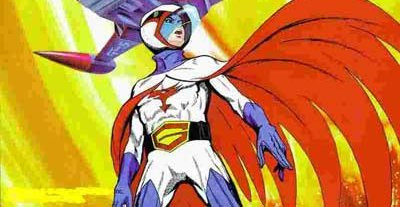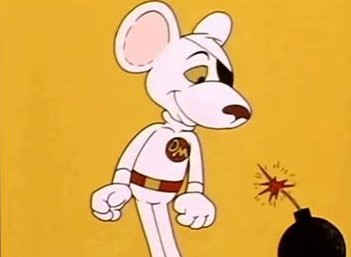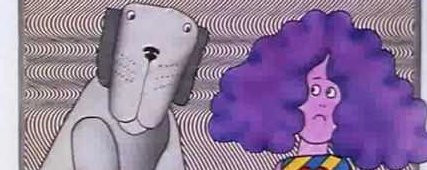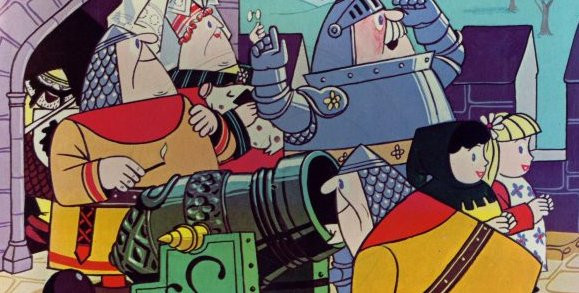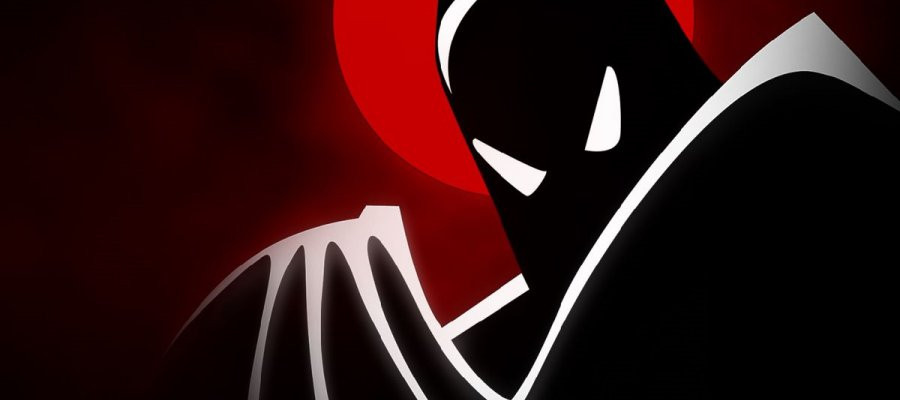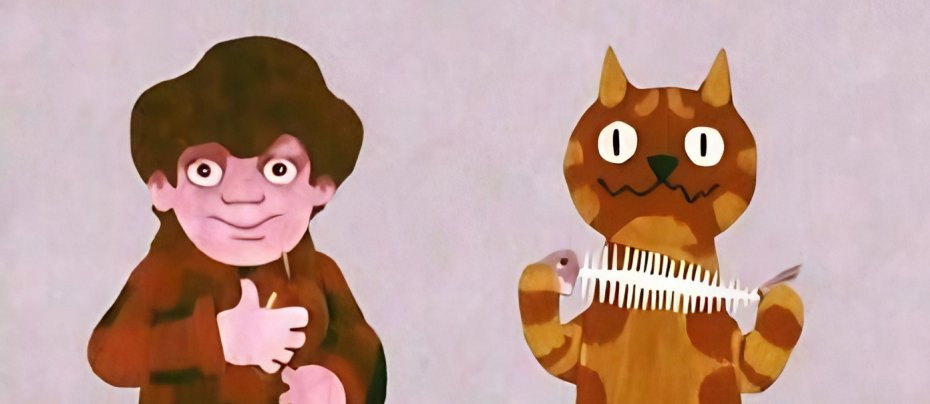
Charley Says
Article by John Winterson Richards
This reviewer often has to confess to a bad case of writer's envy when it comes to some of his fellow contributors to Television Heaven and it reached a peak on reading For Your Information, Andrew Cobby's highly recommended article on British Public Information Films (PIFs). It is therefore something of a relief to be able to point out, in the name of friendly competition, that even this very enjoyable piece still falls short of perfection.
It is positively shocking that Andrew somehow manages to discuss the topic at length without mentioning those twin Titans of PIFs, Charley the Cat and Tufty the Squirrel. Both starred in similar series of short animation intended for children that were released the same year and repeated very frequently thereafter. It is a fair bet that no one who saw them as a child has ever forgotten them.
Charley is the Bagpuss of PIFs. No less than 25,000 people took the time to participate in a poll organised by the BBC in 2006 to celebrate 60 years of the Central Office of Information, the Government Department that commissioned all those PIFs - it was abolished five years later - and of these 10,000, about 40%, voted the Charley Says films the Nation's Favourite PIFs. Tufty came second. The Seventies were truly the Golden Age of PIFs and 1973 was their annus mirabilis.
At this distance there are two opposite ways in which people get the Seventies completely wrong. Some put on their rose-tinted spectacles and talk as if it was some idyllic time when young children all wandered around unsupervised like they were characters in Enid Blyton novels. By contrast, younger people may be under the impression that child abuse was only uncovered in recent years and before then everyone was living in some dark conspiracy of silence.
Neither of those images is accurate. The combination of parental warnings, playground gossip, and PIFs made us a wary generation, perhaps a cynical one. Suspicion of certain teachers - almost certainly unfounded and unfair - was a frequent topic of said playground gossip. Charley and Tufty did their job well, perhaps too well.
The usual form with PIFs was usually to hire some reasonably priced celebrity whom the civil servants at the Central Office of Information assumed was popular with children, like Jimmy Savile, to tell the children that, for example, they should not do what strange men told them to do.
(Incidentally it is being written out of history that the future Sir Jimmy seemed to get a lot of this sort of work back then - "Clunk, Click, Every Trip," "The Age of the Train," and so on. The odd thing is that, although adults in authority seemed to think we children should like him, as far as this child of the Seventies can recall, none of us actually did. We respected his charity work and we wanted to be on Jim'll Fix It for reasons that had nothing to do with him but we resisted all attempts to turn him into a children's favourite.)
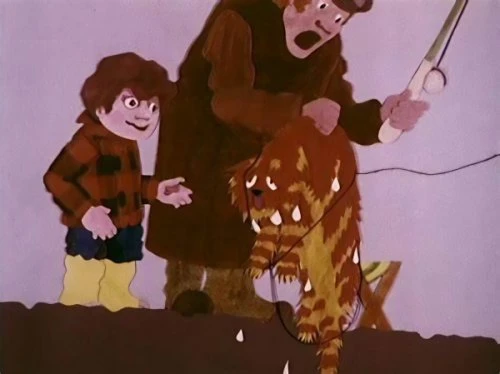
Commissioning animations warning about a number of possible dangers to young children was therefore something of an expensive luxury. Tufty, who was already an established character, was brought to life as a stop motion model, with a commentary by the familiar and genuinely popular Bernard Cribbins, in a high quality production which must have cost quite a bit by PIF standards. Charley, however, was an original character, evidently intended for slightly older children than Tufty's target market, and the production of Charley Says has more of a cheap and cheerful feel to it.
The commission was given to Richard Taylor, an animator who is not as well known as he deserves to be. He was a lifelong friend of Bob Godfrey (Roobarb) and their work has much in common, but Taylor never got the plaudits and "cult" status that Godfrey did. Taylor's somewhat eccentric curriculum vitae includes both the distinctly hippy-ish Crystal Tipps and Alistair and, by way of complete contrast, the much derided Protect and Survive PIFs that were prepared for broadcast in the event of nuclear war. The irony is that Taylor himself was a committed socialist, but, as a working animator, he had to take his money where he could: although at one point he shared a building with the London office of the African National Congress, he had previously produced acclaimed corporate work for Barclays Bank, a prime target for anti-apartheid disinvestment campaigns. In later life he became Professor of Animation at the Royal College of Art and the author of an Encyclopaedia of Animation Techniques. Although he was the son of a renowned poster artist, his own education was actually in Classics at Oxford.
Taylor and an assistant completed the six Charley Says films in six weeks between seasons of Crystal Tipps. He used a very basic paint and cut-out technique. It was made even cheaper and quicker because he was sometimes able to re-use the same bits of cut-out painted paper several times. This gives the whole project a sort of child-like style that suits its ethos perfectly.
The focus of the films is a young boy and his talkative ginger tabby, the eponymous Charley. The boy is never named in the films, but, for whatever it is worth, Wikipedia currently gives him the name Tony without any supporting reference - or at least it does at the time of writing. However, Taylor himself, in a 2006 interview with the BBC, says that his memorable voice was provided by a neighbour's seven-year-old son whose real name was Dominic.
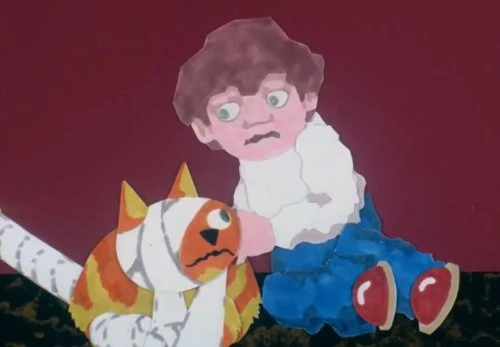
Charley himself usually miaows like a real cat, but when he is "talking" at length his miaowing begins to resemble the pattern, but not the sound, of human speech. He remains completely unintelligible, except to the small boy, who translates helpfully for the viewer's benefit. The translation always begins "Charley says..." - followed by The Message of that particular film.
It was brilliant in its simplicity. Yet the real genius was in the voicing of Charley, especially in the transition from something purely feline to a more human conversational tone. To this day our family describes one of our cats as "talking like Charley" when it seems he has a particularly important point he wants to communicate by miaowing loudly and at length. It was a surprise to discover, many years later, that Charley was none other than Kenny Everett, in 1973 an up and coming radio disc jockey, not yet famous but already building something of a controversial reputation. Charley Says was arguably some of his best work and may prove his most enduring since what seems revolutionary in a particular context does not usually age well.
While the Charley Says films were all intended to stand alone and were shown erratically and not in any particular order, if one happens to watch them in the order in which they are to be found on the National Archives website, Charley has a definite character arc. In the earlier films, he is the careless clown whose overabundance of energy gets him into trouble. In one particularly nightmarish sequence he almost drowns. Another sequence sees him scalded quite seriously, and ends up with him wrapped up in bandages, looking very sorry for himself. This must have been quite distressing to young children, even if it emphasised that he survives and recovers.
The point is that Charley seems to have learned from his experiences and matured as a result. In the later films on the National Archives website he becomes more cautious around hot things, and also becomes the Voice of Wisdom, warning the child not to go off with his friends Vera and Dave for a picnic without telling Mummy (quite right too: no children in the 1970s were called Vera and Dave - with names like that they were probably middle aged wife swappers) or with that strange man who was tempting him with puppies.
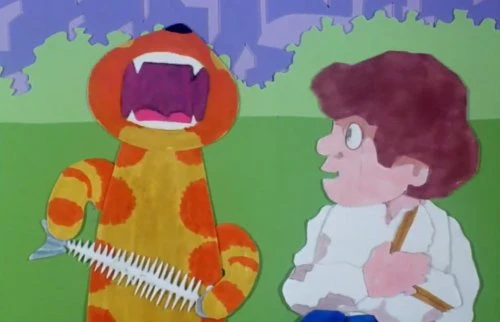
For being so good Charley is rewarded on both of those latter occasions with a fish. He performs the impressive feat of swallowing the fish almost in one while leaving its skeleton perfectly intact - which does rather prompt the thought that someone ought to have produced a PIF about the dangers of giving cats fish with bones in them.
There is no doubt that Charley deserves his fish (preferably deboned). The effectiveness of the six films was such that your fiftysomething reviewer still feels slightly nervous using matches since Charley says they are dangerous. The notion that strange men would lure children away with puppies became something of a trope. Come to think of it, was Charley's objection to the strange man or to the puppies?
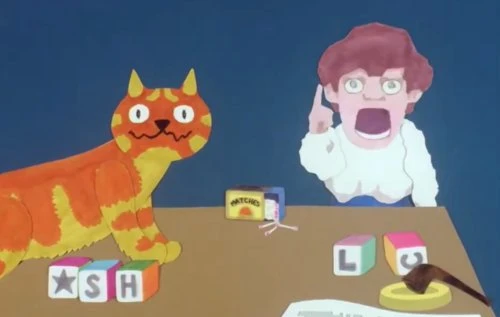
Charley enjoyed a late career revival in 2013 when the Electricity Safety Council brought him back for a couple of short films with David Walliams on the dangers of overloading sockets and buying cheap electrical goods. Alas, the voices were all wrong and the project had none of the innocence of the original films. Indeed, to some they felt as if they were intended to be a deliberate parody, and that suspicion meant that it struck a wrong note when poor Charley was hurt in a manner that looked too much like a satirical reference to his previous injuries. It was harrowing enough to see him in danger when the old version played it straight but trying to play an animal, even an animated animal, being injured for laughs is tone deaf.
There have also been fan produced parodies, or possibly homages, on the likes of YouTube. They are of varying quality but testify to Charley's enduring appeal, and indirectly and perhaps by default, to the talents of Richard Taylor and Kenny Everett.
Published on March 26th, 2024. Written by John Winterson Richards for Television Heaven.


